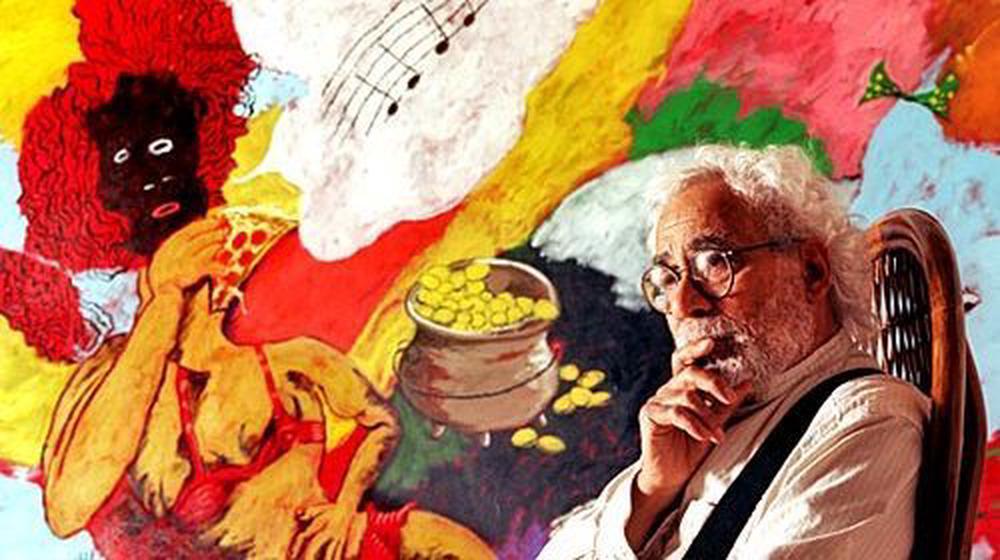Robert Colescott. Paintings That Punch
In Robert Colescott’s lively and intense canvases, layered depictions of stereotypes, myths, and distortions of collective memory implicate the artist, the viewer, and society at large. They profess a deep skepticism about moral progress in contemporary American culture. Colescott’s imaginative scenarios are based on his own feelings and experiences as a Black man and as an artist. His parents, who hailed from Louisiana, moved to Oakland during the Great Migration in 1919. Colescott studied history, economics, political science, international relations, and eventually art at the University of California, Berkeley, on the GI Bill. After graduating in 1949, he spent a year in Paris studying with avant-garde painter Fernand Léger, who helped the young artist learn to express himself through painting the figure. At first, Colescott painted for himself: “I had to visualize some of the hateful things I felt.”1 His work found an audience slowly, but teaching and living on the West Coast, particularly in the Bay Area, gave him “the freedom to work, to be different and peculiar.2
